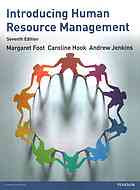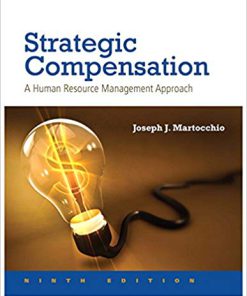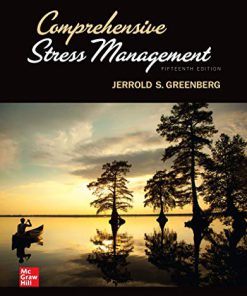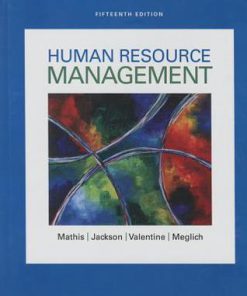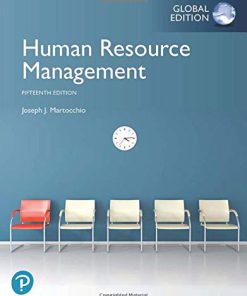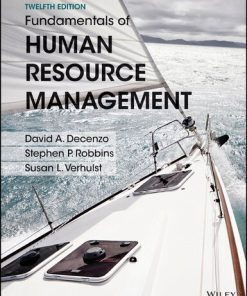Human Resource Management, 15e Joseph Martocchio 0134739752 9780134739755
$50.00 Original price was: $50.00.$25.00Current price is: $25.00.
Human Resource Management, 15e Joseph Martocchio – Ebook Instant Download/Delivery ISBN(s): 0134739752, 9780134739755

Product details:
- ISBN 10: 0134739752
- ISBN 13: 9780134739755
- Author: Joseph
NOTE: Before purchasing, check with your instructor to ensure you select the correct ISBN. Several versions of the MyLab™and Mastering™ platforms exist for each title, and registrations are not transferable. To register for and use MyLab or Mastering, you may also need a Course ID, which your instructor will provide. Used books, rentals, and purchases made outside of Pearson If purchasing or renting from companies other than Pearson, the access codes for the MyLab platform may not be included, may be incorrect, or may be previously redeemed. Check with the seller before completing your purchase. For undergraduate courses in human resource management. This package includes MyLab Management. Real-world examples, supported by theory For students to succeed in a rapidly changing HR job market, knowledge of career options and skill development is key. Human Resource Management, 15th Edition provides students with examples of how HR management is practiced in the real world and the relationships between various HR topics are interwoven throughout the text, giving a thorough introduction to the field based on sound theoretical concepts and practice
Table of contents:
1 Human Resource Management: An Overview
LEARNING OBJECTIVES
Improve Your Grade!
Learn It
Human Resource Management: What It is and Why It is Important
Why Study HRM?
Human Resource Management Functions
Staffing
Performance Management
Human Resource Development
Compensation
Employee and Labor Relations
Safety and Health
Human Resource Data Analytics
Interrelationships of Human Resource Management Functions
Who Performs Human Resource Management Activities?
Human Resource Management Professional
Line Managers
Human Resources Outsourcing
Human Resources Shared Service Centers
Professional Employer Organizations
More about HR Professionals
Human Resources as a Strategic Business Partner in a Dynamic Environment
Capital and Human Capital
Dynamic Human Resource Management Environment
Legal Considerations
Labor Market
Society
Political Parties
Unions
Shareholders
Competition
Customers
HR Technology
Economy
Unanticipated Events
The Role of HRM in Building Corporate Culture and Employer Branding
Corporate Culture
Employer Branding
Human Resource Management in Small Businesses
Country Culture and Global Business
Developing Skills for Your Career
Communication
Critical Thinking
Collaboration
Knowledge Application and Analysis
Business Ethics and Social Responsibility
Information Technology Application and Computing Skills
Data Literacy
PREPARING FOR EXAMS/QUIZZES
Chapter Summary by Learning Objectives
Key Terms
Questions for Review
PREPARING FOR MY CAREER
Personal Inventory Assessment
HRM Is Everyone’s Business
HRM by the Numbers
Questions
Working Together: Team Exercise
Questions
Endnotes
2 Business Ethics, Corporate Social Responsibility, and Sustainability
LEARNING OBJECTIVES
Improve Your Grade!
Learn It
Defining Ethics and the Sources of Ethical Guidance
Business Ethics
Sources of Ethical Guidance
Legislating Ethics
PROCUREMENT INTEGRITY ACT
FEDERAL SENTENCING GUIDELINES FOR ORGANIZATIONS ACT
CORPORATE AND AUDITING ACCOUNTABILITY, RESPONSIBILITY, AND TRANSPARENCY ACT
DODD–FRANK WALL STREET REFORM AND CONSUMER PROTECTION ACT
Creating an Ethical Culture and a Code of Ethics
Ethical Culture
Code of Ethics
Human Resource Ethics
Linking Pay to Ethical Behavior
Ethics Training
Corporate Social Responsibility and Sustainability
Corporate Social Responsibility
Corporate Sustainability
Conducting a Social Audit
PREPARING FOR EXAMS/QUIZZES
Chapter Summary by Learning Objectives
Key Terms
Questions for Review
PREPARING FOR MY CAREER
P I A Personal Inventory Assessment
Ethical Leadership Assessment
HRM Is Everyone’s Business
HRM by the Numbers
Paying the Price for Underpaying Workers
Questions
Working Together: Team Exercise
Questions
Endnotes
3 Equal Employment Opportunity, Affirmative Action, and Workforce Diversity
LEARNING OBJECTIVES
Improve Your Grade!
Learn It
Equal Employment Opportunity and the Federal Laws Affecting Eeo
Constitutional Amendments and the Civil Rights Act of 1866
Title VII of the Civil Rights Act of 1964, Amended in 1972
Equal Pay Act of 1963, Amended in 1972
Lilly Ledbetter Fair Pay Act of 2009
Pregnancy Discrimination Act of 1978
Civil Rights Act of 1991
Age Discrimination in Employment Act of 1967, Amended in 1978, 1986, and 1990
Age Can Actually Be a Bona Fide Occupational Qualification
Rehabilitation Act of 1973
Vietnam Era Veteran’s Readjustment Assistance Act of 1974
Vietnam Era Veterans’ Readjustment Assistance Act of 1974, as Amended
Americans with Disabilities Act of 1990
Americans with Disabilities Act Amendments Act of 2008
Immigration Reform and Control Act of 1986
Uniformed Services Employment and Reemployment Rights Act of 1994
Genetic Information Nondiscrimination Act of 2008
State and Local Laws
Who’s Responsible for Ensuring Equal Employment Opportunity?
Equal Employment Opportunity Commission
Office of Federal Contract Compliance Programs
Employers
Illegal Discrimination and Affirmative Action
Uniform Guidelines on Employee Selection Procedures
Types of Unlawful Employment Discrimination
DISPARATE TREATMENT
ADVERSE IMPACT
Affirmative Action
Uniform Guidelines on Preventing Specific Illegal Employment Discrimination
Guidelines on Sexual Harassment
Guidelines on Discrimination Because of National Origin
Guidelines on Discrimination Because of Religion
Guidelines on Caregiver (Family Responsibility) Discrimination
Discrimination Because of Disability
Diversity and Diversity Management
Elements of the Diverse Workforce
Single Parents and Working Mothers
Women in Business
Mothers Returning to the Workforce (on Ramping)
Dual-Career Families
Ethnicity and Race
Older Workers
People with Disabilities
Immigrants
Foreign Workers
Young Persons, Some with Limited Education or Skills
Baby Boomers, Gen X, Gen Y, and Gen Z
BABY BOOMERS
GENERATION X
GENERATION Y
GENERATION Z OR DIGITAL NATIVES
GENERATION ALPHA
Multigenerational Diversity
Lesbian, Gay, Bisexual, and Transgender Employees
PREPARING FOR EXAM/QUIZZES
Chapter Summary by Learning Objectives
Key Terms
Questions for Review
PREPARING FOR MY CAREER
P I A Personal Inventory Assessment
Intercultural Sensitivity Scale
HRM Is Everyone’s Business
HRM by the Numbers
Detecting Adverse Impact
Working Together: Team Exercise
Questions
Questions
Endnotes
Part Two Staffing
4 Strategic Planning, Human Resource Planning, and Job Analysis
LEARNING OBJECTIVES
Improve Your Grade!
Learn It
HR Strategic Planning Process
Mission Determination
Environmental Assessment
Objective Setting
Strategy Setting
Employee Roles Associated with Competitive Strategies
Strategy Implementation
LEADERSHIP
ORGANIZATIONAL STRUCTURE
INFORMATION AND CONTROL SYSTEMS
TECHNOLOGY
HUMAN RESOURCES
Human Resource Planning
Forecasting Human Resource Requirements
Zero-Base Forecast
Bottom-Up Forecast
Relationship between Volume of Sales and Number of Workers Required
Forecasting Human Resource Availability
Shortage or Surplus of Workers Forecasted
Innovative Recruiting
Compensation Incentives
Alternatives to Layoffs
Succession Planning: A Component of Strategic Planning
Job Analysis: Process and Methods
Reasons for Conducting Job Analysis
Staffing
Training and Development
Performance Appraisal
Compensation
Safety and Health
Employee and Labor Relations
Legal Considerations
Job Analysis Methods
Questionnaires
Observation
Interviews
Employee Recording
Combination of Methods
Job Descriptions
Job Identification
Date of the Job Analysis
Job Summary
Duties Performed
Job Specification
Standard Occupational Classification (SOC)
The Occupational Information Network (O*NET)
Competencies and Competency Modeling
Foundational Competencies
Industry-Related Competencies
Occupation-Related Competencies
Job Design Concepts
Job Enrichment
Job Enlargement
Job Rotation
Reengineering
PREPARING FOR EXAM/QUIZZES
Chapter Summary by Learning Objectives
Key Terms
Questions for Review
PREPARING FOR MY CAREER
P I A Personal Inventory Assessment
Problem Solving, Creativity, and Innovation
HRM Is Everyone’s Business
HRM by the Numbers
Severance Pay at Miller Furniture
Working Together: Team Exercise
Questions
Questions
Endnotes
5 Recruitment
LEARNING OBJECTIVES
Improve Your Grade!
Learn It
Recruitment and the Recruitment Process
Environment of Recruitment
Labor Market Conditions
Active or Passive Job Seekers
Legal Considerations
Internal Recruitment Methods
Human Resource Databases
Job Posting and Job Bidding
Employee Referrals
External Recruitment Sources
High Schools and Vocational Schools
Community Colleges
Colleges and Universities
Competitors in the Labor Market
Former Employees
Unemployed
Military Personnel
Self-Employed Workers
Ex-Offenders
External Recruitment Methods
Online and Mobile Recruiting
INTERNET RECRUITER
VIRTUAL JOB FAIR
CORPORATE CAREER WEB SITES
WEBLOGS (BLOGS FOR SHORT)
GENERAL-PURPOSE JOB BOARDS
NACELINK NETWORK
.JOBS
ALLIANCEQ
NICHE SITES
CONTINGENT WORKERS’ SITES
Traditional Methods
MEDIA ADVERTISING
PRIVATE EMPLOYMENT AGENCIES
PUBLIC EMPLOYMENT AGENCIES
EXECUTIVE SEARCH FIRMS
RECRUITERS
JOB FAIRS
INTERNSHIPS
PROFESSIONAL ASSOCIATIONS
UNSOLICITED APPLICANTS
OPEN HOUSES
EVENT RECRUITING
SIGN-ON BONUSES
COMPETITIVE GAMES
Tailoring Recruitment Methods to Sources
Alternatives to Recruitment
Promotion Policies
Overtime
Onshoring
PREPARING FOR EXAM/QUIZZES
Chapter Summary By Learning Objectives
Key Terms
Questions for Review
PREPARING FOR MY CAREER
HRM Is Everyone’s Business
HRM by the Numbers
Recruitment Source Cost Effectiveness
Questions
Working Together: Team Exercise
Questions
Questions
Endnotes
6 Selection
LEARNING OBJECTIVES
Improve Your Grade!
Learn It
Selection and Environmental Factors Affecting the Selection Process
People also search:
human resource management articles pdf
human resource management an experiential approach
human resource management associate degree salary
human resource management average salary
human resource management abbreviation
You may also like…
Business & Economics - Human Resources
Cookbooks
Business & Economics - Human Resources
Introducing human resource management Seventh Edition. Edition Foot
Business & Economics - Human Resources
Strategic Compensation: A Human Resource Management Approach, 9e Joseph J. Martocchio
Business & Economics - Human Resources
Education Studies & Teaching - Education Management & Organisation
Business & Economics - Management & Leadership
Business & Economics - Human Resources
Business & Economics - Human Resources
Fundamentals of human resource management 1st edition by David Decenzo 1118413753 9781118413753






